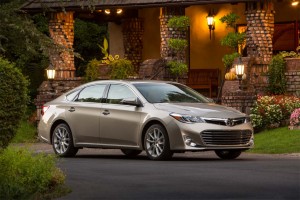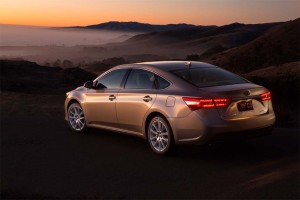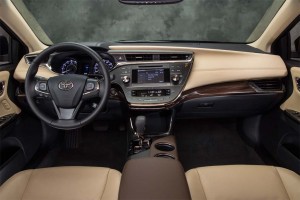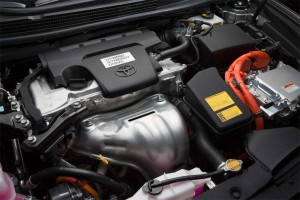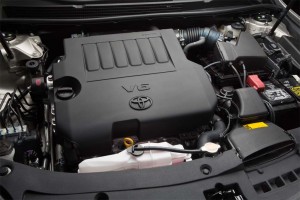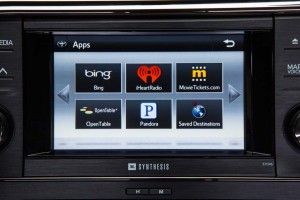This story has been updated to include pricing and other information.
For a brand long known for high quality but plain vanilla design, Toyota sent shock waves through the industry when it revealed an all-new version of the big Avalon sedan earlier this year. The new, full-size sedan is perhaps the single best example yet that Toyota CEO Akio Toyoda was serious when he promised to put more “passion” into the brand.
The long-popular Avalon has been completely revamped for 2013 and is now the most “American” car the Japanese maker has ever developed, the striking new design emerging from Toyota’s styling center in Newport Beach, California, with the maker’s engineering center in Ann Arbor, Michigan taking lead on that end of the product. Production will be U.S.-based, as well.
Avalon is clearly part of Toyota’s quest for younger buyers, the 2013 remake boasting a fresh exterior design that moves away from the conservative and cautious approach that had characterized earlier versions of the big sedan. But looks aside, we set out to see if the 2013 Toyota Avalon really lives up to all the hype as we headed to California for our first test drive.
When we first saw the 2013 Toyota Avalon at the New York Auto Show, last spring, it stood in stark contrast to another recent sedan offering from the Japanese giant, the relatively stodgy Camry. The Avalon remake features a longer, flowing roofline, a lower vehicle beltline that suggests a sense of motion, as well as a chiseled shoulder line that creates a fluid silhouette. The overall look suggests a car that is both roomy and more sporty than the traditional, conservative Toyota sedan.
Avalon’s overall height has been reduced by 0.98 inch and the overhangs have been shortened by 0.59 inches at the front and 1.77 inches at the rear, giving the new Avalon a more compact appearance — as well as better aerodynamics. In fact, many of the visual changes have a functional purpose. The more expressive front-fascia design not only creates an aggressive appearance but also improves engine cooling as well as pedestrian impact protection.
Turn-signal indicators have been relocated at the lower section of the front bumper to contribute to the sleek appearance. The taillights nowutilize LED lamps to improve visibility and durability.
The new dimensions, however, preserve what has always been one of the Avalon’s most important selling points – its spacious interior. If we have one complaint it’s the center seat in the rear which isn’t as comfortable as it was in the previous version of the car.
Overall, the architecture of the instrument panel and center stack are nicely executed and help create a sense of having more space in the front seat.
The materials used in the interior of the 2013 Avalon have been upgraded and include hand-stitched premium soft-touch material that helps give the cabin a more personal feel. In addition, the car is also equipped with new technology such as paddle shifters, quadrabeam headlights, blind spot-monitoring, capacitive touch-controlled switches, and rear-seat airbags.
Toyota is offering two different powertrains on the Avalon. There is a 3.5-liter, 90-degree, DOHC, six-cylinder engine with Variable Valve Timing with Intelligence that produces 268 horsepower at 6,200 rpm and 248 lb.-ft. of torque.
In addition, the 2013 Avalon also can be ordered with the latest iteration of the Toyota Hybrid Synergy Drive. Here, that includes an Atkinson cycle four-cylinder gas engine attached to a hybrid transaxle that acts as a power-split device between the I-4 and two high-output electric motors housed in the transaxle.
One of the motor/generators (MG1) is driven by the engine and functions as a starter and generates electrical power to operate the second electric motor/generator (MG2) and charge the hybrid battery. The second motor (MG2) operates independently to help the gasoline engine.
Overall, Toyota’s engineers have chipped away at the rough spots in the Synergy Drive and the new Avalon Hybrid certainly represents one of the system’s best applications yet. With a combined drive rating of 200 horsepower, it delivers solid fuel economy of 40 miles per gallon and will accelerate from 0 to 60 in about 8.0 seconds, according to Toyota estimates.
Out on the road, the hybrid power train is virtually invisible. There’s a bit of that CVT rubber banding in situations demanding aggressive acceleration – the tach revving to red line and holding there as the car itself races to catch up. But you don’t get the sense that you might be standing still like you do in a couple of Toyota’s other hybrid applications.
In addition, the suspension of the Avalon Hybrid has been nicely tuned to neutralize the extra weight and the electric power steering combines to make the car into a quite competent driving machine under a variety of conditions, including tight turns and corners.
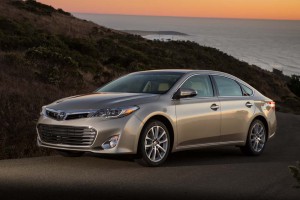
Designed in California, engineered in Michigan and assembled in Kentucky, the 2013 Avalon will be Toyota's most American model yet.
The Avalon Hybrid is equipped with EV, ECO and SPORT mode selectors – which will display on the new color display between the IP gauges. The EV Mode utilizes the battery energy to propel the vehicle using only the electric motor. But this isn’t a plug-in hybrid. You’re limited to a maximum range of about one mile and speeds of up to 20 miles per hour — when conditions are ideal.
The ECO Mode prioritizes fuel-efficient driving by reducing throttle response and energy consumption from the HVAC system. The Sport Mode helps create greater throttle response and acceleration, and a more positive steering feel through the electric power steering, or EPS.
The V6 version of the Avalon also gains from the suspension improvements built into the new vehicle.
The overall ride and handling are very much improved from the old model, which had that floaty, “boulevard ride” sort of feel that meant the Avalon was often compared – and not all that favorably – to old Buicks. The new Avalon still delivers a comfortable ride but the overall road feel of the car is much improved. If the comparison between the two brands continues it’s a reflection of the improvements in ride and handling both have made.
The 2013 Toyota Avalon’s 3.5-liter V-6 is likely to remain the most popular powertrain package. And it certainly offers some advantages over the hybrid for those who want to maximize performance and sporty feel. It is reasonably quick and responsive – though there is a fuel economy penalty compared to the gas-electric alternative. Then again, 21 city, 31 highway and 25 combined are numbers you’d likely not have imagined from a full-side sedan just a few years ago.
Toyota has been promising big changes as it updates its line-up. We were less than overwhelmed by the latest Camry and even Toyota-friendly Consumer Reports hasn’t been all that kind to the marque’s latest hybrid, the Prius C. But if the new Avalon is an indication of where Toyota’s design and engineering operations are aiming for the future, we have reason to hope. The 2013 Toyota Avalon is a big thing in a big package and perhaps the most exciting offering we’ve seen from the maker in years.
The base 2013 Toyota Avalon XLE with the 3.5-liter V-6 starts at $30,990 – plus delivery fees. The top-line Avalon Limited with the same V-6 goes for $39,650, while the Avalon Hybrid in Limited trim tops the line at $41,400, a $1,750 premium for the gas-electric driveline. All versions of the 2013 Toyota Avalon will officially go on sale in December.

